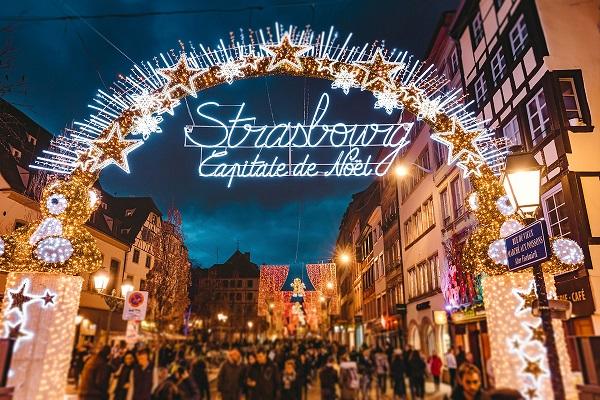
Rich in its heritage, cultural, and of course commercial aspects, every year the Strasbourg Christmas Market attracts tourists and local visitors who go there for different reasons. Herbert Castéran, Dean of EM Strasbourg and Research Lecturer, and Claire Roederer, Associate Lecturer and Head of the Customer Experience Chair, looked at each person's expectations with two major findings: they transcend traditional social groups and make them more porous, while the experience they have had is a key factor in their propensity to consume and the image they retain of the event.
At a time when major European cities are fighting a fierce battle to win the honorary title of “Most beautiful Christmas market” and when Alsatian towns are deploying the treasures of communication, marketing, and authenticity to attract tourists to their own markets during the Christmas holidays, here is a study conducted by EM Strasbourg Business School that shouldn’t remain under the tree. By looking at “The impact of the lived experience on the attendance of an event: the example of the Strasbourg Christmas Market”, Herbert Castéran and Claire Roederer provide new insights into the mechanics of the experience of tourists and local visitors to this market. “One of the novelties is that we are able to divide up audiences not by the traditional criteria of socio-professional categories or generation, but by the aspects of the visitor's experience, which transcend the former”, explains Claire Roederer. An approach in which rhetoric and the sensory and praxeological aspects come to shape the feelings of each person, according to their expectations and sensitivity.
Three Categories of Visitors
“We have identified three categories of visitors,” continues Herbert Castéran, “which we have named the ‘Alices’, characterized by their ability to marvel at everything easily (37% of our sample), the ‘purists’, in search of absolute authenticity (16%) and the ‘Scrooges’*, rather critical of the Market (47%), who are often the locals, by the way. ” By improving the characterization of these three audiences, the researchers are using the know your customer lever to provide the experience they expect or, for ‘Scrooges’ and ‘purists’, to be able to offer them something that meets their expectations better. “We have also noted that these groups are not totally impermeable,” he adds, “that an ‘Alice’ can gradually evolve towards the demands of a ‘purist’ or a ‘Scrooge’, while the latter can regain the wonder of an ‘Alice’, for example”. Provided that they are offered a customer journey that delicately mixes the attributes expected by these different audiences.
Something for Everyone
The specific character of the Strasbourg Christmas Market, which offers the opportunity to discover a unique architectural heritage, and to enjoy a very cultural and spiritual experience while taking in the finery of a large commercial market, makes it possible to construct targeted messages for each of these audiences. Either to aim for a global offer that satisfies the greatest number: on the one hand the different categories of visitors, each of which would be reaffirm their liking for or reconcile them with the Christmas Market, and on the other hand the exhibitors and traders, who would thus benefit from a public that would be won over or regained and more inclined to stay, return, and consume more. Finally, to satisfy the organisers themselves, who could draw from these lessons the keys to developing their offer year after year to renew and strengthen its attractiveness.
Reinventing Concepts
Through this work, the researchers theorize that, more than any other marketing action, the consumer’s lived experience is consubstantial with their pleasure and therefore with their propensity to consume. It is also essential to the construction of their memory and the image of the Market that they will help to convey around them. While the Strasbourg Christmas Market served as a full-scale laboratory for this work, its conclusions are largely transferable to other commercial contexts. “The challenge is to get decision-makers to reinvent concepts, to ask themselves what they give their customers in terms of experience, how they renew this experiential offer by taking into account the expectations of consumers who aspire to ever greater authenticity and sincerity,” explains Claire Roederer. This in-depth work explores the experience offered at points of sale, which can, in some cases, thoroughly question habits and upset the perception businesses have of a clientele they thought they knew well.
*The name Alice is taken from Lewis Carroll's novel Alice in Wonderland, and the name Scrooge is taken from Charles Dickens' A Christmas Carol.
